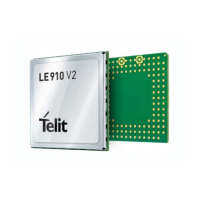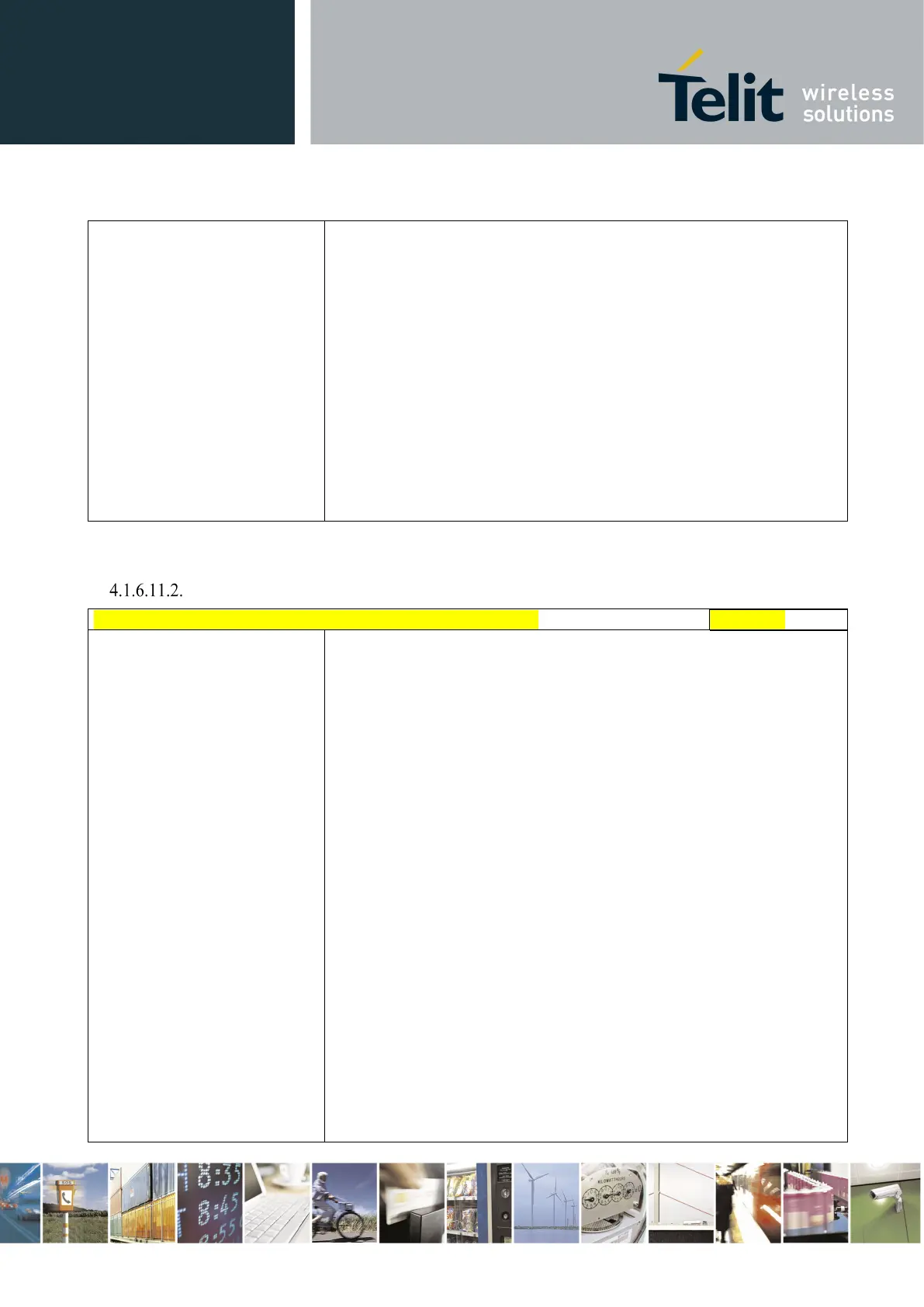Telit LE910 V2 Series AT Commands
80446ST10707A Rev. 0– 2015-11-03
Reproduction forbidden without Telit Communications S.p.A. written authorization - All Rights Reserved page 420 of 509
Mod. 0808 2011-07 Rev.2
#HTTPCFG: (list of supported prof_id>s),<s_length>,(list of
supported <server_port>s), (list of supported
<auth_type>s),<u_length>,<p_length>,(list of supported
<ssl_enabled>s),(list of supported <timeout>s),(list of
supported <cid>s),(list of supported <pkt_size>s)
where:
<
> - integer type value indicating the maximum length of
parameter <
>.
> - integer type value indicating the maximum length of
parameter <
>.
<
> - integer type value indicating the maximum length of
Send HTTP GET, HEAD or DELETE request - #HTTPQRY
#HTTPQRY – send HTTP GET, HEAD or DELETE request
ommand>,<resource>[,<extra
_header_line>]
Execution command performs a GET, HEAD or DELETE request to
HTTP server.
Parameters:
<prof_id> - Numeric parameter indicating the profile identifier.
Range: 0-2
<command>: Numeric parameter indicating the command requested to
HTTP server:
0 – GET
1 – HEAD
2 – DELETE
<resource>: String parameter indicating the HTTP resource (uri), object
of the request
<extra_header_line>: String parameter indicating optional HTTP header
line
If sending ends successfully, the response is OK; otherwise an error code
is reported.
Note: the HTTP request header sent with #HTTPQRY always contains the
“Connection: close” line, and it can not be removed.

